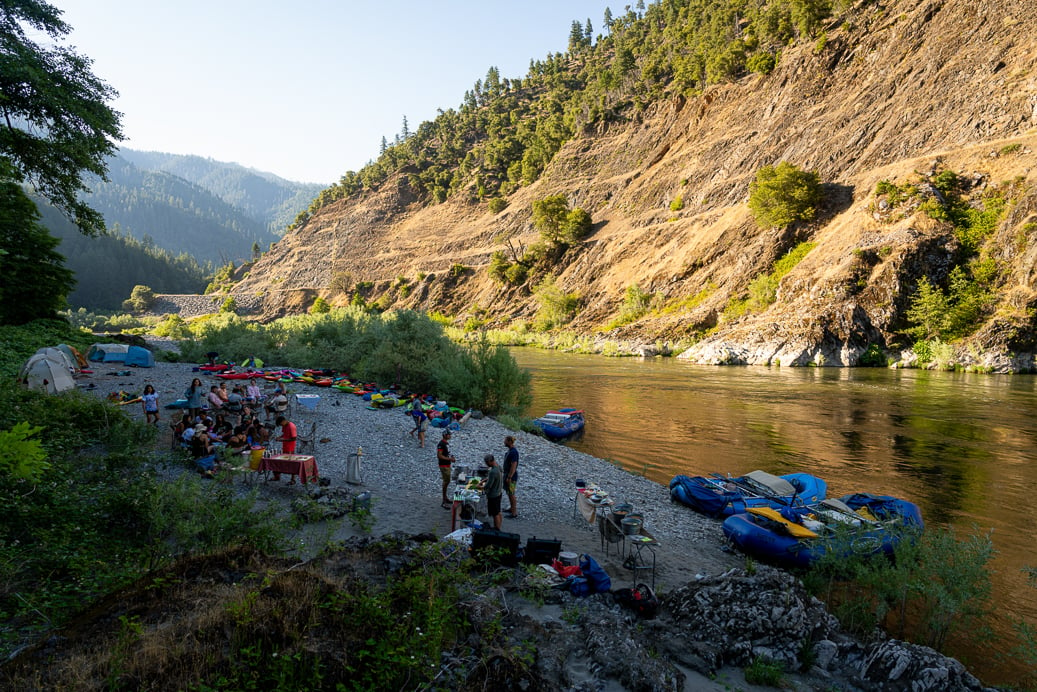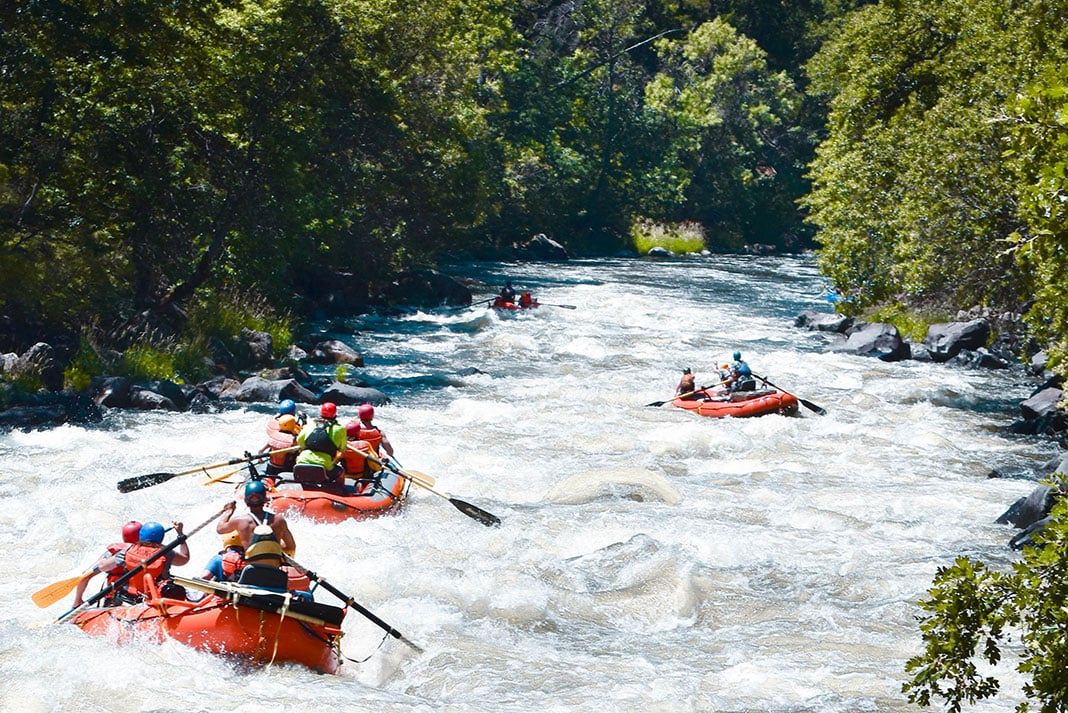The Klamath River stretches 400 miles from its source in Oregon to the sea in California, and on October 21, 2024, for the first time in over 100 years, wildlife officials from both the Oregon Department of Fish and Wildlife and Yurok Tribe Fisheries department recorded Chinook salmon in Oregon’s Klamath Basin.
In September 2024, the Iron Gate dam on the Klamath River, the final of four hydroelectric dams on the Klamath, came down in what constituted the largest dam removal project in the United States. The fight for dam removal was driven by a number of players, including the Klamath River Renewal Corporation, the State Governments of California and Oregon, and most pivotally, local tribes including the Yurok, Karuk, Hoopa, Shasta, and Klamath.
The project restores nearly 400 miles of vital habitat for salmon with the goal of reviving an ecosystem that once not only supported salmon but Indigenous communities along the entirety of its banks including the Yurok, Karuk, Hoopa, Shasta, and Klamath — communities that suffered during the century the dams were in place.
Historically, the Klamath River was the third largest salmon-producing river in the continental United States. In addition to chinook and coho salmon, the Klamath also supports steelhead, coasts cutthroat trout, green and white sturgeon, and Pacific lamprey.
The Upper Klamath had a reputation as one of the best summer whitewater rivers in the west, with water flow around 1,000-3,000 cubic feet per second thanks to the John C. Boyle dam just upriver, now undamed.
The Paddle Tribal Waters Program aims for first descent of the new Klamath in Spring 2025
The removal of the four hydroelectric dams, first the Copco 2 dam in October 2023, followed by Copco 1 dam, the JC Boyle dam, and finally the Iron Gate Dam in September 2024 exposes a new, or rather rewilded, Klamath River.
Indigenous youth from the Yurok, Hoopa, Karuk and other local tribes have been reconnecting with sections of the Klamath river that have not flowed freely for over a hundred years by way of whitewater kayak. The Paddle Tribal Waters Program, organized by nonprofit Rios to Rivers, has Indigenous youth learning whitewater skills in preparation for a 400-mile source to sea journey in Spring 2025.
This will be the first whitewater descent of the new Klamath since its undamming.
Danielle Frank, director of development and community engagement for Rios to Rivers and member of the Hoopa and Yurok tribes, grew up deeply connected to the Klamath River.
“We’ve really grappled with this [the term first descent] a lot, recognizing that our river’s been a highway for water transit since time immemorial, canoes have existed from the top of the headwaters down to the mouth at Requa,” Frank shared. “We may not be the first people to run these places and we recognize that but we will be the first ultimate source to sea whitewater kayaking descent.”
While a first descent of the undammed Klamath and an accompanying documentary is the short-term goal of the Paddle Tribal Waters program, the scope of the project goes well beyond spring 2025. The long-term goal is to support Indigenous youth along the Klamath in becoming leaders in the paddling community, to promote peer mentorship, and strengthen the relationship between Indigenous youth and their ancestral waterways. These goals will span generations rather than a season.
“That’s what reconnecting our river is for us; it’s not just a new playground. It’s the ability to reconnect our people,” Frank said.
As a direct result of the damming of the Klamath over a century ago, salmon populations had almost died out in the region, unable to return to their spawning headwaters. For the first time in over 100 years, in Spring 2025, the first generation of newly spawned salmon will make the journey from the Klamath to the sea alongside the Indigenous youth kayakers.
The Indigenous-led battle to free the Klamath
In 1918 Copco 1 Dam, the first dam in the Klamath Hydroelectric Project was built, preventing the salmon run from reaching the Upper Klamath Basin. In 1925, Copco 2 Dam became operational, followed by J.C. Boyle Dam in 1958 and Iron Gate Dam in 1962.
Amy Bowers Cordalis of the Yurok Tribe was working on the Klamath as a fish technician when she witnessed the largest fish kill in the history of the Klamath. In September 2002, an estimated 34,000 Chinook salmon died in a severe epizootic outbreak. According to a report by the Yurok Tribal Fisheries Program, “low flow from Iron Gate Dam was a substantial causative factor in the fish kill of 2002.”
As a result, Bowers Cordalis was inspired to go to law school to prevent ecological collapse like that from happening in her home again. “Nothing like that in Yurok’s history has ever happened,” Bowers Cordalis said in Undammed, a Patagonia film documenting her journey.
The removal of the dams was not the first time the Yurok had to fight for the Klamath and their way of life. In 1969, Bowers Cordalis’ great uncle Raymond Mattz was fishing when a game warden confiscated his gill nets and gave him a citation.
The State argued that the Klamath River Reservation “for all practical purposes, almost immediately lost its identity,” and was not Indian country and therefore was subject to United States fishing regulations, while Mattz maintained that the Klamath River Reservation remained sovereign and retained the right to fish and practice Yurok culture in the manner they had since time immemorial.
Mattz pushed the issue all the way to the Supreme Court in what became the 1973 case Mattz v. Arnett which reaffirmed that the Yurok Reservation was still Indian Country and the Yurok people had federally-reserved fishing rights. This landmark case laid the groundwork for the Yurok Nation to express its sovereignty.
Despite reaffirming the sovereignty of the Yurok, in 1978 the federal government put a complete moratorium on Yurok fishing on the Klamath River. “They sent in federal Marshalls with full riot gear, raiding houses in the middle of the night without warrants, abuse and beatings down on the water,” Bowers Cordalis said in Undammed. “The Yurok people kept fishing.”
The fight for the restoration of the Klamath River has been ongoing and largely Indigenous-led. Bowers Cordalis was instrumental in the legal battle to remove the four dams from the Klamath River, serving as a tribal lawyer on behalf of the Yurok and other tribes.
“It’s really an exciting time to be a tribal lawyer because all of those fishing and water rights are the supreme law of the land,” said Bowers Cordalis in Undammed. “The people in my generation realize our fight is for the preservation of the fish and the river. And a lot of us have dedicated our adult lives to continuing that historical fight.”
The Future of the Klamath
During the century that the Klamath was dammed, water temperatures rose and toxic algae bloomed. Salmon were blocked from reaching the upper river to spawn, and their populations dropped below 10% of what they once were.
The first of the dam’s reservoirs was drained in January 2024, uncovering 2,800 acres of land in California that the state has promised to return to the Shasta Indian Nation. As part of the rehabilitation effort, teams made up of largely tribal members have been planting native seeds in former lakebeds and restoring river habitat for returning fish.
“When the dams come down, that’s when the work is able to start,” Danielle Frank of Paddle Tribal Waters shared. “The dams were in the way of the salmon returning, of revegetating the reservoirs and all the restoration that is to come… There’s 50 years of work to be done to bring this river to a state of restoration.”
Work that, Frank states, people couldn’t be more excited to have the opportunity to begin.
Restoration of the river’s health is intrinsically tied to the restoration of the health of the Indigenous communities along its banks. Along the Klamath, Indigenous communities are living in one of the biggest food deserts along the west coast without access to their traditional healthy food sources; food sources that were cut off by the Klamath River dams, Frank explained.

“We really hope that all the folks looking to recreate on these new reopened spaces of river that they can also know there are years of work to come,” said Frank.
While a fully restored Klamath still may be many years away, this autumn, wildlife officials recorded Chinook salmon in Oregon’s Klamath Basin for the first time in over a hundred years.
Watch Paddle Tribal Waters II: Bring the Salmon Home in the 2024 Paddling Film Festival.





Great article!! I will watch the YouTube video later today. I grew up in Klamath and Requa and greatly enjoyed the river, it’s mouth and the wildlife of the area. Our house in Requa overlooked the mouth of the river near Squaw Rock, a landmark of the area. My parents were good friends of Pat and Elsie Gussin owners of the Requa Inn at the time. My uncle Herb Fehely family was one of the early settlers of Requa. I greatly miss the river, and the ocean and now much older and somewhat disabled I know I’ll probably never get the chance to visit again.